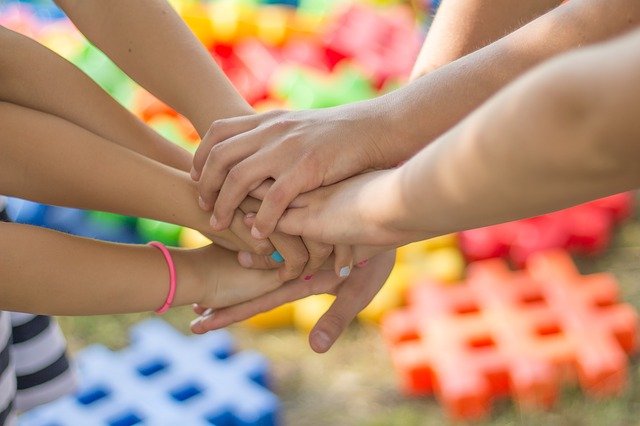There are times when answering a question with a question is appropriate. This is rarely more true than when a child asks for an adult to solve a problem that they themselves could solve with just a little more thought. When Susie says “Bobby keeps knocking down my blocks” or Michael says “This puzzle piece won’t fit” you are faced with a choice as a parent. Solve the problem for the child or do what we do and ask “And what do you think could be done about that?”. The younger the child the more likely you will get a shoulder shrug, but to ensure that children are solving more problems via thinking as they get older, you can present them with practice. What follows are some examples of everyday activities that encourage thought and self-reliance versus dependence on others to make the world work in a way that makes them comfortable.
– Reading stories together is a wonderful time for children to be presented with an opportunity to think. Most children’s stories provide a variety of subject matter for thinking. “How do you think you would feel if you were tired and Mortimer kept up his clang-clang, rattle, bing-bang?”. “Whatever would you do if pigs were loose in your school?”. “Are there times that are inconvenient for having to go pee?”. Sooooo many questions to ask and so many answers to think through. And yes, of course we are Robert Munsch fans.
– Family cooking time is a great opportunity for practice. Preparing a Saturday morning breakfast as a family is a fun (albeit messy) opportunity to get some thinking practice in. Even young children can help with mixing. Once they wash their hands, hand them two utensils and ask which should be used for the job at hand. Whether it is mixing pancake batter, sifting flour, scooping and measuring sugar, or any other number of kitchen chores, they get to think and participate. They also get to eat of course. That is our favorite part.
– Picking outfits that are weather appropriate and even organizing clothes for seasons or activities is a great way to practice thinking skills. It is also an opportunity for Mom and Dad to ask most of the questions for a change. “Would you wear that outfit if it was cold outside?”. “What color is that outfit? Do you have other outfits that color?”. “Is that a shirt, shorts, underwear, socks or pants?”. Each of these questions yields a way to sort and store the items your child puts on their body every day. Even asking what part of the body the item covers can be a way to present organization opportunities.
– Sorting and card games. Matching games are a classic way to build powers of association, but we like sorting games better. It is rare that there is only one way to sort something. Presenting children with opportunities to sort and organize is a game unto itself. Colored blocks of different sizes and shapes, PlayDoh containers, and picture cards with a variety of different plants and animals can all be sorted in creative ways. Even sorting laundry can be turned into a game. Regardless of what you choose, you are giving an opportunity to show that there is more than one way to do things if you just apply a little thought.
– Who would you ask? Ultimately, we all have our limits. You wouldn’t see a school teacher about a heart problem. This is because they do not possess the specialized knowledge required to claim expertise on this subject. Helping your child understand that you (and they) cannot be an expert on everything is important for teaching humility as well as encouraging them to seek answers in appropriate places. Helping them understand that there are people who know a lot about certain things and that those people are a resource (whether in person, through books, media, or other channels) to learn more is a valuable lesson. So if your child asks “Why are spiders not insects?” you can start with “Who would be someone we could ask about that?”. They won’t necessarily know the answer – but it is a great way to introduce them to what an entomologist is (also a zookeeper or biology teacher might be a good start).
Ultimately the more you do for a child, the less they learn to do for themselves. While our guts may tell us on occasion that the love comes from Mom or Dad doing something nice for us, our experience with our own adult children informs us that what they appreciate – and what has made them independent, capable, thoughtful people – is that they were given the opportunity to learn to solve problems for themselves.





